A NewMil Marine finish is more than a mirror-like shine; it’s an engineered coating system designed to protect your investment against the harsh marine environment. For discerning yacht owners in South Florida, maintaining a vessel’s aesthetic perfection is paramount. However, a world-class finish extends far beyond surface beauty. It represents a critical protective barrier for the underlying fiberglass composite structure. At NewMil Marine, the process of painting a fiberglass yacht is approached not as a cosmetic overlay, but as a comprehensive technical procedure of substrate restoration, structural protection, and aesthetic finalization. With decades of experience operating in the demanding marine climate of Fort Lauderdale and West Palm Beach, our methodology is engineered to deliver unparalleled longevity and resilience, safeguarding the value and integrity of your vessel.

Beyond a Flawless Finish: Engineering a Protective Shield for Your Yacht
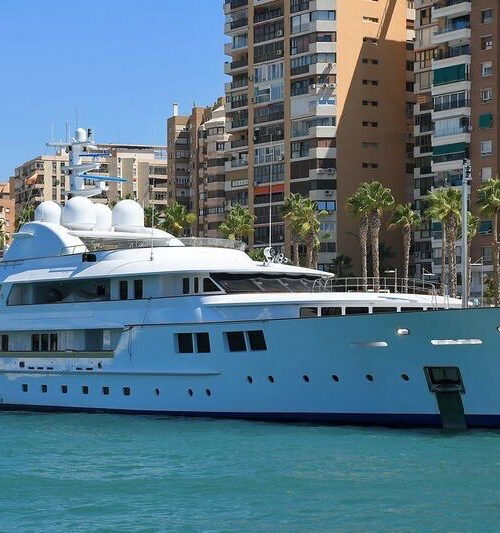
From Worn Gelcoat to a World-Class Finish: Recognizing the Need for Refinishing
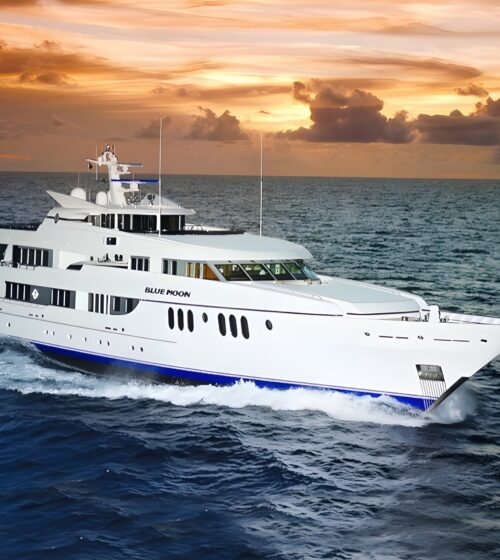
Gelcoat Crazing and Stress Cracks
It is critical to distinguish simple crazing from deeper stress cracks. Stress cracks often radiate from high-load areas, such as around stanchion bases, cleats, or winches, and indicate that the underlying fiberglass laminate is flexing beyond the gelcoat’s elasticity. Ignoring these can lead to structural fatigue and delamination. A professional diagnosis is essential to determine the root cause and ensure the correct repair methodology is employed, which may involve reinforcing the underlying laminate before any cosmetic work begins.
Osmotic Blistering: A Symptom of Substrate Hydrolysis
This process begins when water molecules slowly permeate the semi-permeable gelcoat layer. Once inside the laminate, this water can dissolve water-soluble materials (WSMs) such as uncured resins, binders, or glycols left over from the manufacturing process. This creates a concentrated solution trapped in small voids within the fiberglass. Through osmosis, this solution draws in more water from the outside, increasing the hydrostatic pressure within the void until it pushes the gelcoat outward, forming a blister. The fluid inside these blisters is often acidic and can chemically attack the polyester resin, breaking down the bond between the resin and the glass fibers, which compromises the structural integrity of the laminate over time. Therefore, osmotic blistering is not merely a cosmetic issue; it is an indicator of a progressive, degenerative condition within the hull that requires a comprehensive, science-based remediation strategy.
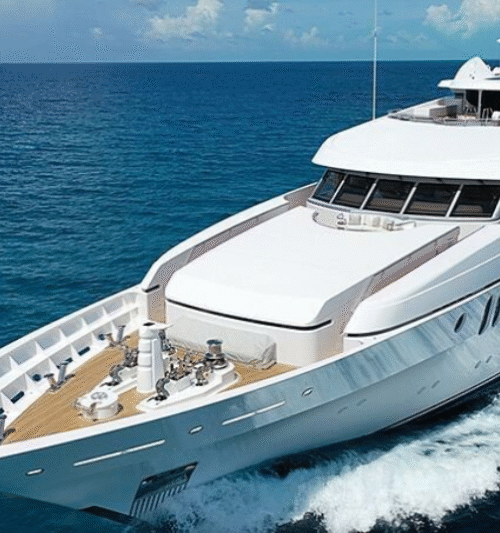
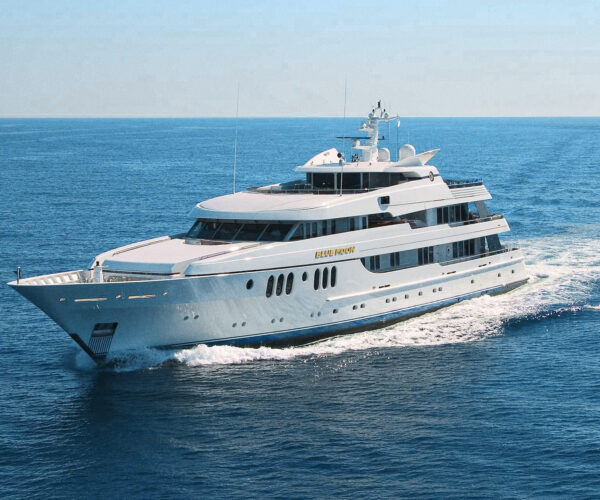
Fading, Chalking, and Oxidation
The Anatomy of a World-Class Finish: The NewMil Marine Systematic Approach
Stage 1: The Foundation - Meticulous Deconstruction and Substrate Diagnosis
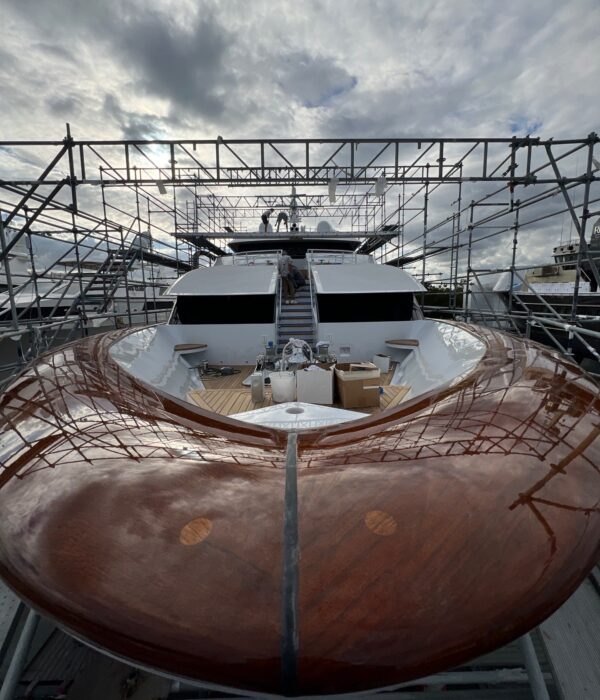
Stage 2: The Science of Surface Repair and Perfect Fairing
Osmotic Blister Remediation ( The Chemistry of a Permanent Fix )
Gelcoat Crazing & Stress Crack Repair ( Engineering for
Flex )
Achieving a ``Class A`` Surface ( The Art ofFairing )
Stage 3: The Multi-Layer Coating System - A Symphony of Chemistry
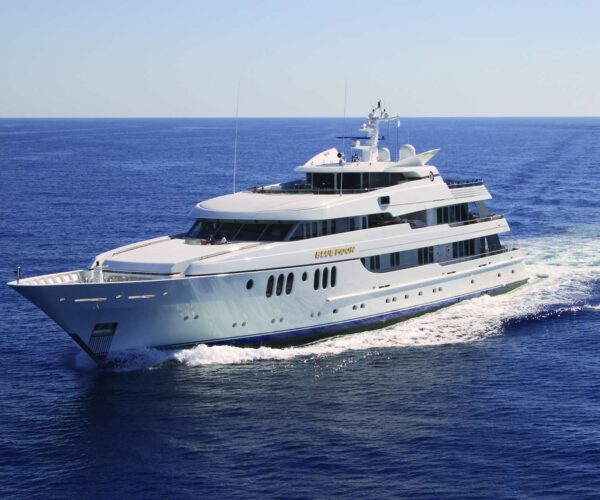
The Primer Layer: The Critical Bond:
The chemistry of the primer is vital. Epoxy primers form the foundation of the system due to their exceptional adhesion to the substrate, superior chemical resistance, and excellent water barrier properties, making them the ideal choice for sealing the faired hull and preventing any potential moisture intrusion. In some systems, a polyurethane primer may be applied over the epoxy primer as a final step before the topcoat. Polyurethane chemistry offers greater flexibility and UV stability, providing an ideal interface for the polyurethane topcoat to bond to. The choice of a specific primer system is a technical decision based on the substrate, the chosen topcoat, and the vessel’s intended operating environment.
The Topcoat: Brilliance and Resilience:
While several premium systems exist, a nuanced understanding of their distinct characteristics is essential for making the best recommendation for a specific client. The choice between leading systems often involves a trade-off between ultimate hardness and ease of repair, a frequent topic of discussion among professional applicators and knowledgeable owners.
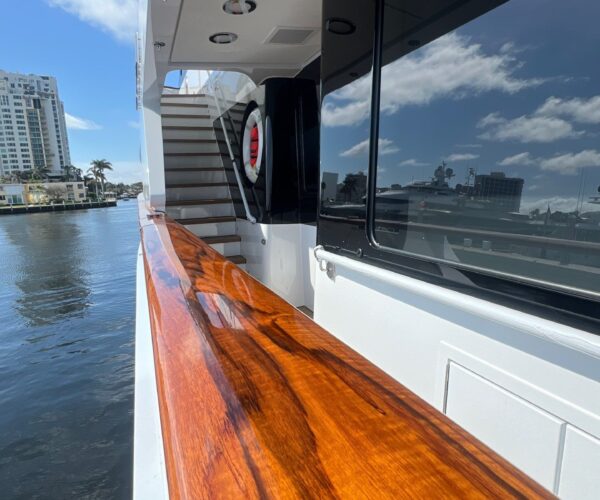
| Feature | Alexseal Premium Topcoat 501 | Awlgrip HDT | Awlcraft 2000 |
|---|---|---|---|
| Chemical Composition | Polyester Polyurethane | Aliphatic Polyurethane | Acrylic Urethane |
| Hardness & Abrasion Resistance | High | Exceptional | Good |
| Repairability & Buffing | Fully Repairable/Buffable | Spray Repair Recommended | Fully Repairable/Buffable |
| Application Method | Spray or Roll/Tip | Spray Only | Spray Only |
| Maintenance Protocol | Requires polymer sealant/wax | Sealant only, no wax | Sealant; wax only after buffing |
| NewMil’s Ideal Use Case | Best for owner-operators valuing ease of repair and application flexibility. | Best for professionally crewed yachts demanding maximum hardness and chemical resistance. | Excellent gloss and DOI with good repairability, ideal for high-end sportfishers. |
This comparative analysis demonstrates that the “best” paint system is not a universal choice. It is a tailored recommendation based on the client’s specific needs, maintenance capabilities, and expectations for the vessel. A professionally crewed superyacht may prioritize the extreme hardness of Awlgrip HDT, while the owner of a custom sportfish who values the ability to easily repair minor scratches may be better served by the more forgiving chemistry of Alexseal or Awlcraft 2000. This consultative approach, grounded in deep product knowledge, ensures the client receives a coating system perfectly matched to their requirements.
The NewMil Marine Advantage: The Fusion of Craftsmanship and Controlled Environments
The Craftsman and the Climate: Mitigating Application Risks in South Florida
The South Florida Challenge:
The NewMil Solution: Controlled Environments:
Preventing Common Application Defects:
Our Commitment to Excellence: Final Inspection, Reassembly, and Delivery
Rigorous Quality Control:
Proper Reassembly:
Client Walk-through and Handover:
The Lasting Value of a Flawless Polyurethane Finish
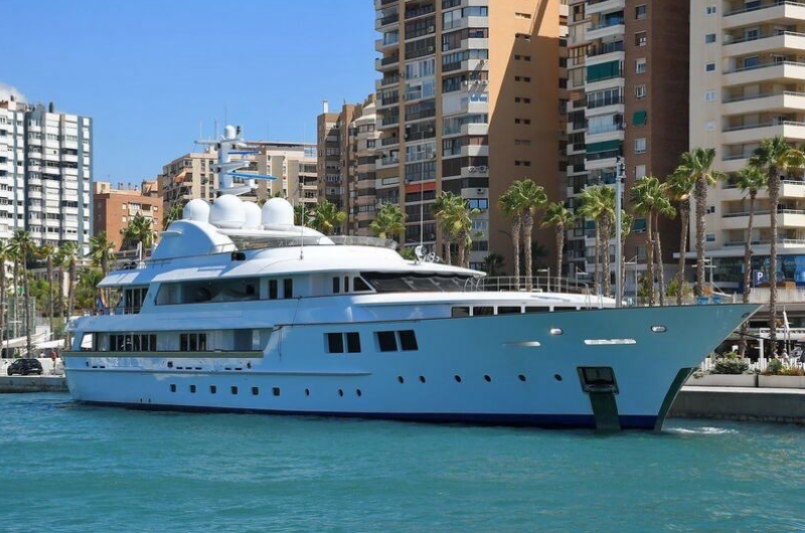
A Tangible Return on Investment: Maximizing Resale Value
A flawless paint job acts as a powerful signal to potential buyers and their surveyors. It indicates that the yacht has been maintained to the highest standards, suggesting that what is visible on the surface is reflective of the care given to the mechanical and structural systems that are not. Conversely, chalky, crazed, or blistered gelcoat is a major red flag, immediately raising concerns about moisture intrusion, structural integrity, and deferred maintenance, which invariably leads to significant price reductions during negotiations.
The return on this investment can be substantial. In one documented case, a yacht protected with a high-quality coating system sold for $800,000 more than an identical neighboring yacht that lacked such protection. While this represents an exceptional case, it underscores the principle that a superior finish is not just an expense it is an equity-building upgrade that directly enhances the asset’s market value.
Reducing the Burden of Maintenance: Paint vs.
The Reality of Gelcoat Maintenance:
The Simplicity of Polyurethane Maintenance:
What Our Customer Says
“The paint job was completed well ahead of the yachts other work, with Newmil continuing to assist us with bright work maintenance to finish in good form. Sauer furthermore stood behind his guarantees, immediately addressing any item requiring additional attention after the job’s completion. I would be very pleased to work with Sauer and Newmil Marine on any future project. Please do not hesitate to contact me if you require further information.”
– Richrd Fuher, Master
read more
“Newmil Marine Yacht Refinishing specializes in painting, varnishing and refinishing of interiors and exteriors. They are trained and knowledgeable in the application of premium urethane coatings, fairing and bright work. Newmil did a fabulous job on restoring Keiki Kai to a previous high standard.”
– Captain Trevor Usher
read more
“Newmil were set up in such a way as to make best use of the time available to carry out the work. They showed exceptional skills in accomplishing all that they were originally asked to do and to remain within the agreed budget of that provided at commencement of the project, in fact they carried out additional work beyond that originally agreed upon.”
– Anthony, Beveridge, Technical Superintendent
“With the assistance of the professional paint & carpentry services provided by Newmil Inc the yachts maintenance project have always been completed “On Time” and Within the agreed budget. It was a pleasure to work with a team of skilled professional painters & carpenters.”
– Captain Dave Johnson
“Work on vessels you painted in the past looked good but what sold me on Newmil was the professionalism of yourself and crew. You were always willing to do what it took to make this customer pleased. I will recommend Newmil Marine to any discerning yacht Captain and Owner in the industry and will use…
“Newmil has always followed manufacture recommendations and has never had an issue using SeaHawk. Newmil is a SeaHawk certified applicator and I would highly recommend them.”
– Brad Kleinsasser, SeaHawk Premium Yacht Finishes, South Florida Sales Manager
Answering the Key Questions of a Discerning Yacht Owner
A professionally applied two-part polyurethane topcoat system from NewMil Marine is engineered to last 10 to 15 years, and often longer, with proper routine maintenance. The aliphatic polyurethane chemistry used in premium products like Alexseal and Awlgrip contains advanced UV inhibitors that provide far superior resistance to solar degradation, fading, and chalking compared to the polyester resin base of traditional gelcoat.
No, it is a permanent solution when executed correctly. Painting over existing blisters without addressing the underlying cause is a guaranteed failure. The NewMil Marine process is a comprehensive remediation. We address the root cause—laminate hydrolysis—by grinding out all compromised material, thoroughly drying the substrate, and then sealing the entire hull with an impermeable 100% solids epoxy barrier coat. This process arrests the hydrolysis and creates a stable, waterproof foundation before any cosmetic topcoats are applied, ensuring the problem does not return.
Both are premier polyurethane systems, but they have different chemical compositions that result in a trade-off between hardness and repairability. Traditional Awlgrip and Awlgrip HDT are harder and more abrasion-resistant but are more difficult to repair if scratched. Alexseal and Awlcraft 2000 are slightly softer but are easily buffed and repaired, even by a capable crew. The ideal system depends entirely on your yacht’s usage profile and maintenance program. A professionally crewed charter yacht may benefit from maximum hardness, while an owner-operated sportfish may prioritize ease of repair. We provide a detailed consultation to recommend the optimal system for your specific needs.
Absolutely. We utilize advanced spectrophotometer technology to precisely scan and match any existing color. Furthermore, through our direct relationships with paint manufacturers like Alexseal and Awlgrip, we can formulate virtually any custom color a client desires, ensuring a unique and personalized finish.
We remove all deck and hull hardware to eliminate the risk of “paint bridging.” When paint is applied over masked hardware, it creates a thin film that bridges the gap between the hardware and the substrate. This bridge is a weak point that will inevitably crack due to movement and sealant flex, allowing water to penetrate beneath the paint and cause blistering and peeling. Removing, painting under, and re-bedding the hardware is the only professional method to ensure a continuous, durable, and watertight finish.
A NewMil Marine paint job significantly reduces long-term maintenance costs and labor. It eliminates the need for the frequent, costly, and labor-intensive cycle of aggressive compounding, polishing, and waxing required to maintain the gloss of an aging gelcoat surface. The hard, non-porous polyurethane finish requires only simple washing and an occasional application of a polymer sealant, lowering the total cost of ownership over the 10-15 year lifespan of the finish.
The timeframe for a complete refinishing project can range from several weeks to a few months. The duration is not dictated by the painting itself, but by the essential and time-consuming preparatory stages. The extent of substrate repairs required—such as remediating extensive blistering, which necessitates a lengthy hull drying period—is the primary factor. Our timeline is built around the principles of meticulous, uncompromising quality, not speed, to ensure a flawless and lasting result.
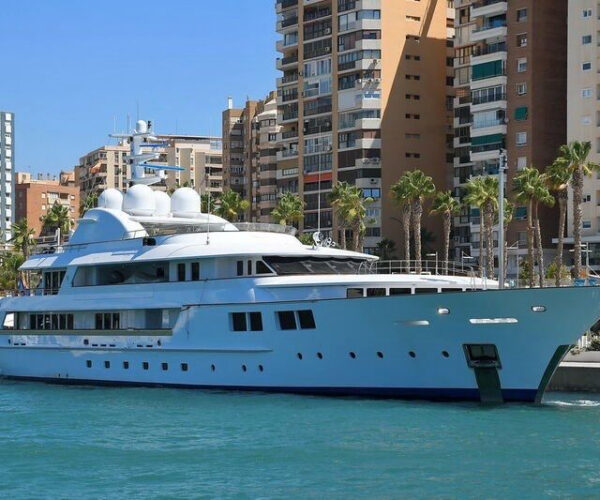
Begin Your Yacht's Transformation
Schedule Your Comprehensive Vessel Consultation
A world-class finish begins with an expert diagnosis. Contact the NewMil Marine team to schedule a detailed assessment of your yacht’s fiberglass substrate and coating system. We will provide a comprehensive project proposal outlining the path to restoring and protecting your investment for years to come. Our specialists will evaluate the condition of your vessel, discuss your aesthetic and performance objectives, and recommend a tailored coating system that delivers lasting value and unparalleled beauty.
Contact Us:
- Phone: (954) 327-3009
- Email: info@newmilmarine.com
- Or fill out our online inquiry form to have a specialist contact you.
Trusted by the Industry’s Best: NewMil Marine is a certified applicator for the world’s leading coating manufacturers. Our work is trusted by discerning owners, captains, and management companies, as reflected in our client testimonials.
